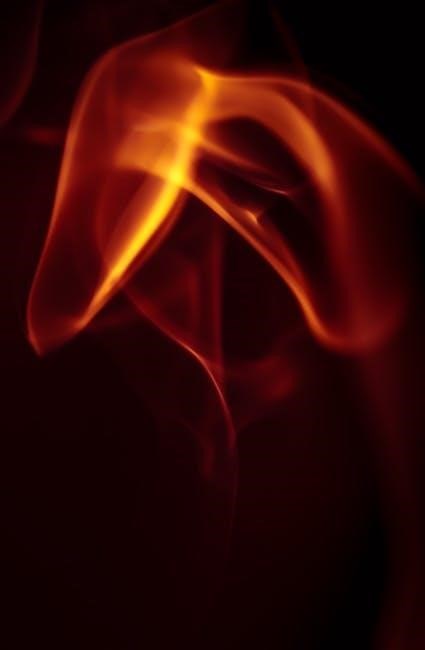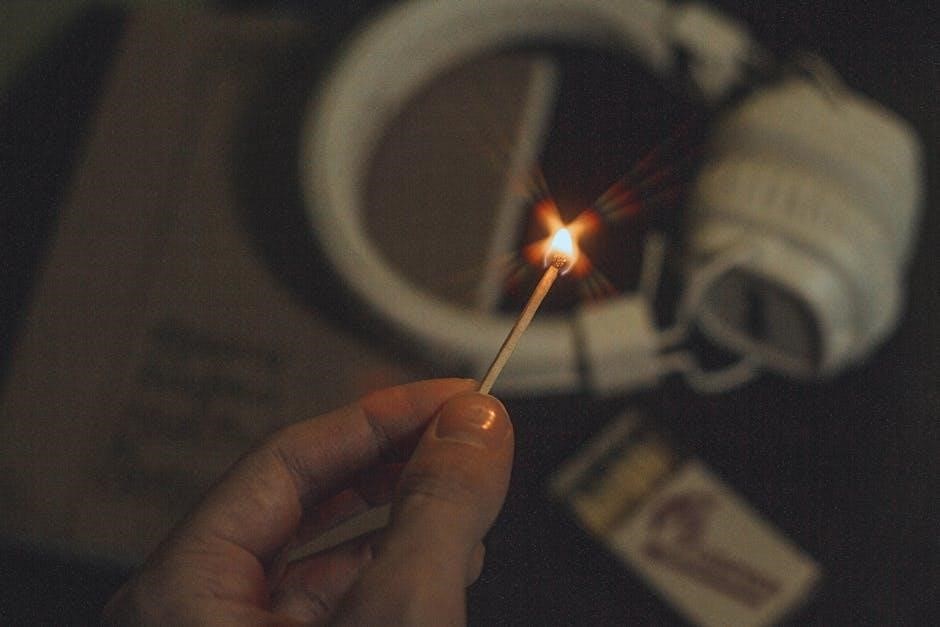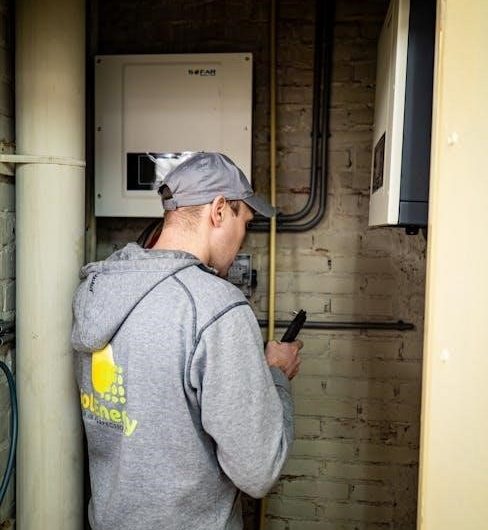
Fire sprinkler head types are crucial for effective fire protection systems, using various techniques to detect and suppress fires quickly and efficiently always online.
Overview of Fire Sprinkler Systems
Fire sprinkler systems are designed to detect and suppress fires in domestic and commercial buildings, featuring both fire detection and suppression systems. These systems typically consist of a network of pipes, pumps, and sprinkler heads that discharge water to extinguish fires. The systems are often automatic, discharging water when the sprinkler head detects a fire through rising temperature. Fire sprinkler systems are essential for protecting people and property from fire hazards, and are commonly used in various types of buildings, including residential, commercial, and industrial properties, to provide a safe and reliable means of fire protection, using water as the primary extinguishing agent.
Types of Conventional Sprinkler Heads
Conventional sprinkler heads include upright and pendent types, with different temperature ratings and responses, using water always effectively online systems.
Characteristics of Conventional Sprinkler Heads
Conventional sprinkler heads have distinct characteristics, including temperature ratings and responses, with standard and quick response options available, using different techniques to detect fires.
The temperature ratings of these sprinkler heads are crucial in determining their effectiveness in various fire scenarios, with different ratings suitable for different hazards.
The response time of conventional sprinkler heads is also an important factor, with quick response heads discharging water more rapidly than standard heads, providing effective protection always.
Overall, the characteristics of conventional sprinkler heads make them a popular choice for fire protection systems, offering reliable and efficient fire suppression capabilities online.
Classification of Sprinkler Heads
Sprinkler heads are classified into categories using specific criteria and standards always online effectively.
Four Main Types of Sprinkler Heads
The four main types of sprinkler heads include pendent, upright, sidewall, and concealed, each with unique characteristics and uses in fire protection systems.
These types of sprinkler heads are designed to provide effective fire suppression in various environments and applications, including commercial and residential buildings.
The pendent sprinkler head is the most common type, while the upright sprinkler head is used in areas with high ceilings.
The sidewall sprinkler head is used in areas where the ceiling is not suitable for a pendent or upright sprinkler head.
The concealed sprinkler head is used in areas where aesthetics are a concern, providing a hidden fire protection solution, using different techniques always online.

Technical Specifications of Sprinkler Heads
Specifications include temperature ratings and response times for effective fire protection systems always online using standard techniques and materials available.
Standard and Quick Response Sprinkler Heads
Standard and quick response sprinkler heads are designed to provide effective fire protection, with the main difference being the response time. The standard response sprinkler head has a larger thermal bulb, typically 5mm, which takes longer to activate. In contrast, the quick response sprinkler head has a smaller thermal bulb, usually 3mm, allowing it to activate faster. This makes the quick response sprinkler head ideal for areas with high fire hazards, such as commercial kitchens or industrial facilities. The use of standard and quick response sprinkler heads depends on the specific fire protection needs of the building, and the choice ultimately depends on the building’s design and occupancy. Standard and quick response sprinkler heads are both available.
Fire Protection and Building Codes
Building codes require fire protection systems to follow specific regulations and standards always and everywhere online today.
NFPA 13 and NFPA 13R Regulations
NFPA 13 and NFPA 13R provide regulations for fire sprinkler systems, including installation and maintenance requirements. The codes specify standards for sprinkler head types, such as standard and quick response sprinklers. NFPA 13 applies to commercial buildings, while NFPA 13R applies to residential buildings. These regulations ensure that fire sprinkler systems are designed and installed to provide effective fire protection. Compliance with NFPA 13 and NFPA 13R is crucial for building owners and managers to ensure safety and avoid liabilities. By following these regulations, buildings can be protected from fires and occupants can be kept safe. Proper installation and maintenance are essential to ensure the systems function correctly.

Early Suppression Fast-Response Sprinklers
Early suppression fast-response sprinklers provide quick fire suppression using thermal elements always online with fast response times and efficient water distribution systems.
ESFR Sprinkler Characteristics
ESFR sprinkler characteristics include a fast-response thermal element with an RTI of 50 or less, allowing for quick fire suppression. The thermal element is designed to activate quickly in high-challenge fire hazards. ESFR sprinklers are typically used in areas with high fire loads, such as warehouses and industrial facilities. They are designed to provide a high volume of water quickly to suppress fires. The characteristics of ESFR sprinklers make them an effective choice for fire protection in high-risk areas. ESFR sprinklers are also designed to be reliable and durable, with a long service life. They are an important component of fire protection systems in many industries.

Extended Coverage Sprinklers
Extended coverage sprinklers provide larger coverage areas with fewer sprinklers always online quickly.
Maximum Coverage Area
The maximum coverage area for extended coverage sprinklers is determined by the type of hazard and the sprinkler’s listing. According to NFPA 13, the maximum coverage area for light hazard occupancies is 225 square feet per sprinkler, while for ordinary hazard occupancies it is 130 square feet per sprinkler. The coverage area is also affected by the sprinkler’s discharge density and the height of the ceiling. Proper calculation of the coverage area is crucial to ensure that the sprinkler system is designed to provide adequate protection. This requires careful consideration of the specific hazards and conditions present in the building, as well as the capabilities and limitations of the sprinkler system.

Installation and Maintenance
Proper installation and maintenance of fire sprinkler systems ensure optimal performance always using correct techniques online.
Importance of Proper Installation and Maintenance
The importance of proper installation and maintenance of fire sprinkler systems cannot be overstated, as it directly affects their performance and ability to suppress fires. A well-installed and maintained system can significantly reduce the risk of fire damage and loss of life. Regular inspections and testing are crucial to ensure that the system is functioning correctly and that all components, including sprinkler heads, are in good working condition. This includes checking for corrosion, damage, and wear on pipes, fittings, and sprinkler heads, as well as verifying that the system is properly connected to a water supply. Proper installation and maintenance are essential for ensuring the reliability and effectiveness of fire sprinkler systems.
Fire sprinkler head types are essential for fire safety, using various techniques to detect and suppress fires quickly and efficiently every time online always.
A summary of fire sprinkler head types is necessary to understand the various options available for fire protection systems, using different techniques and technologies.
The main goal is to detect and suppress fires quickly and efficiently, minimizing damage and loss of life.
Fire sprinkler head types are designed to meet specific needs and requirements, including different types of buildings and occupancies.
The information provided is essential for making informed decisions about fire protection systems, and for ensuring compliance with relevant codes and regulations.
By understanding the different types of fire sprinkler heads, individuals can make informed decisions about their fire protection needs, and take steps to protect their properties and occupants from fire hazards.
 valentía 2 libro pdf descargar gratis
valentía 2 libro pdf descargar gratis  lhsaa handbook pdf
lhsaa handbook pdf  schematic solar panel wiring diagram pdf
schematic solar panel wiring diagram pdf  ions worksheet answer key pdf
ions worksheet answer key pdf  tier 3 vocabulary list pdf
tier 3 vocabulary list pdf  the last castle jack vance pdf
the last castle jack vance pdf  scag freedom z owners manual
scag freedom z owners manual  instructions for mobi thermometer
instructions for mobi thermometer  guiding light alan spaulding
guiding light alan spaulding